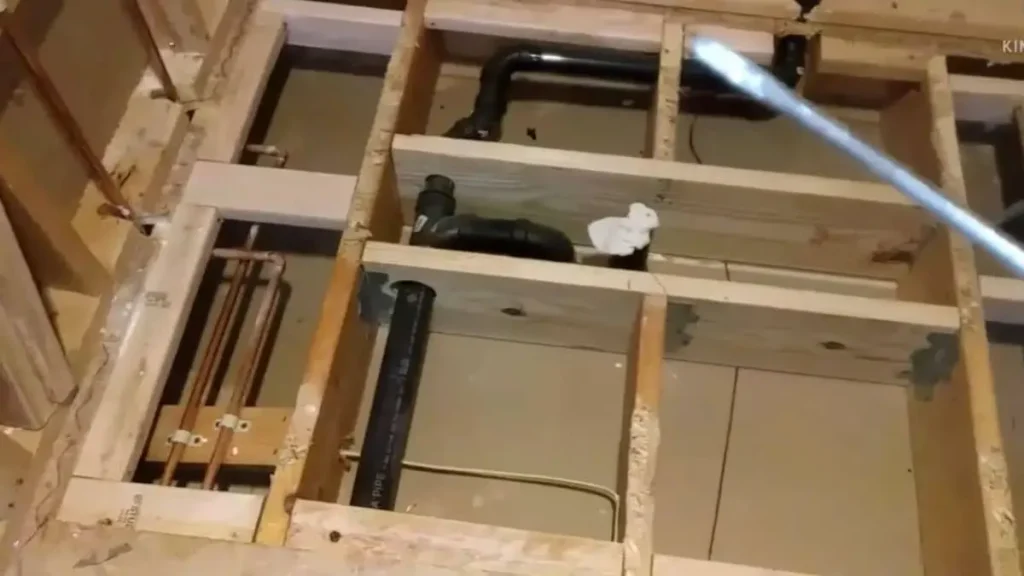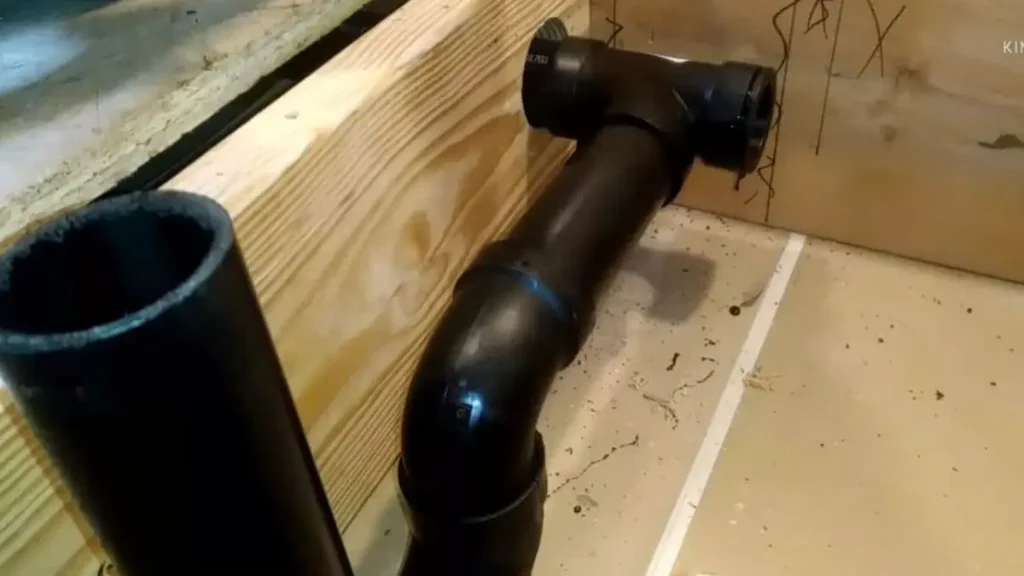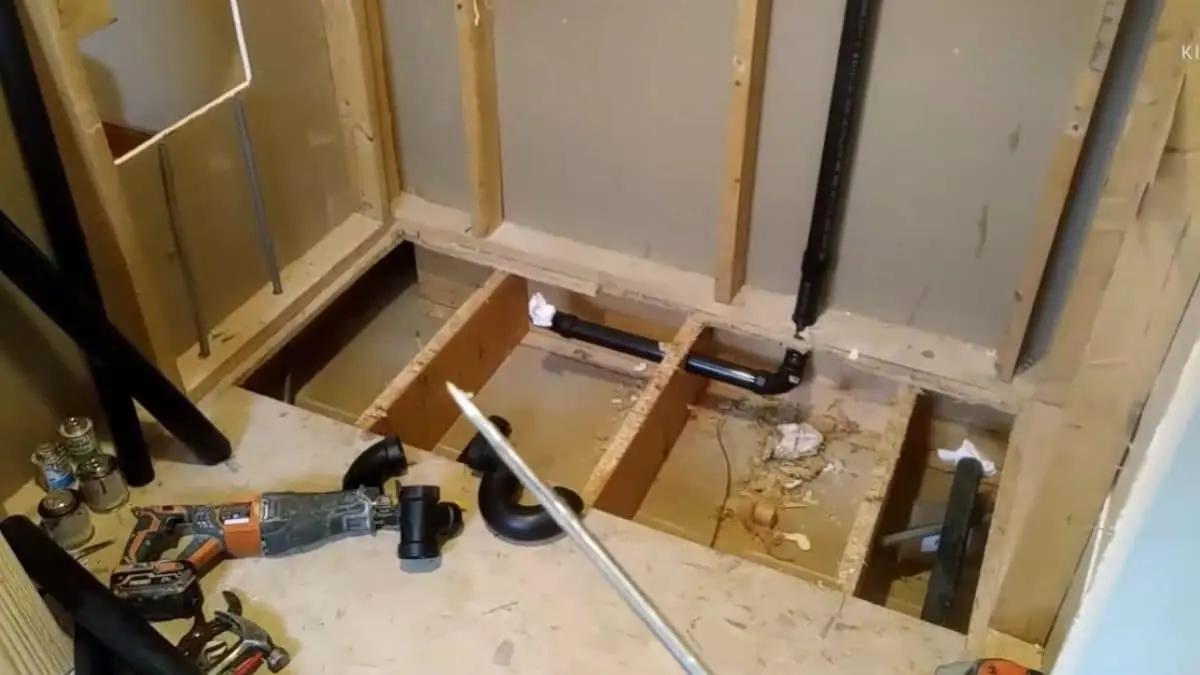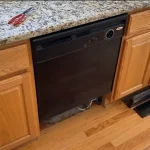Reinforcing floor joists for plumbing is essential to maintain the structural integrity of your home. When plumbing lines are installed, cuts are often made in the joists to accommodate pipes, which can weaken the overall support system. Reinforcement prevents sagging floors, structural damage, and potential safety hazards.
Whether you’re installing new plumbing or upgrading existing lines, reinforcing the joists ensures that your floor remains stable while supporting the additional load.
In this article, you’ll learn how to properly reinforce floor joists for plumbing, avoiding common mistakes, and ensuring long-term durability.
Why Reinforcing Floor Joists for Plumbing is Important
What happens when floor joists are cut for plumbing?
Floor joists provide the primary support for your home’s flooring. When installing plumbing, joists are often notched or drilled to make space for pipes. However, cutting into a joist without reinforcement reduces its strength. This can lead to sagging floors, structural damage, and even accidents if the joists fail to support the load.
Reinforcement prevents weakening of the structure. By adding support to the joists, you maintain their ability to bear weight, even after cuts are made for plumbing installation.

Structural Integrity
Why is structural integrity important for plumbing installations?
Structural integrity ensures that the building can support its weight, including flooring, furniture, and any additional load. When joists are compromised due to plumbing cuts, the entire structure may weaken. Proper reinforcement keeps the flooring stable, preventing long-term damage.
Example: Imagine cutting into an old joist to install a new plumbing line. Without reinforcement, the joist may not support the load, causing the floor to sink over time. This weak point can also affect other connected joists, spreading the issue throughout the house.
Prevent Sagging Floors and Cracks
How does reinforcing joists prevent sagging floors?
Reinforcing floor joists before installing plumbing ensures that the weight is evenly distributed. If the floor joists are weakened without reinforcement, they may sag, leading to uneven floors and cracks in walls or ceilings. Sagging floors can also cause doors and windows to become misaligned, creating additional issues.
Pro Tip: Always reinforce floor joists before running plumbing lines to avoid costly repairs later. Joist hangers, sistering boards, or metal reinforcement plates are effective methods for strengthening the joists.
Safety Concerns
Can weakened floor joists cause safety issues?
Yes. Weakened joists can collapse under pressure, creating dangerous situations. Over time, unreinforced joists may develop cracks or split under the additional load of plumbing, leading to potential structural failure.
Real-world example: If plumbing is added to a second-floor bathroom without proper reinforcement, the weight of water-filled pipes combined with the weakening of the joists could cause part of the ceiling below to sag or collapse. Ensuring that the joists are properly reinforced eliminates this risk.
Long-term Durability
Does reinforcing floor joists increase long-term durability?
Yes. Reinforcing joists ensures that your home remains structurally sound for decades. Without reinforcement, the weight of plumbing and potential wear on the joists over time may result in costly repairs down the road. Reinforcing the joists during installation is a proactive step toward extending the lifespan of your flooring system.
Tools and Materials You’ll Need
What tools and materials are required for reinforcing floor joists during plumbing installation?
Reinforcing floor joists for plumbing requires both specialized tools and common materials that can be found in most home improvement stores. Using the right tools ensures precision, while quality materials guarantee that your reinforcement lasts for years.
To reinforce joists, you’ll need tools such as a circular saw for clean cuts, a drill for creating holes for plumbing pipes, and a hammer or nail gun to secure reinforcement materials. In addition, a level will help ensure that your joists remain even, preventing sagging later on.
As for materials, you’ll primarily work with joist hangers, metal plates, or additional lumber for sistering joists. Joist hangers are steel connectors that provide added strength where joists meet beams. Sistering involves attaching new, longer boards alongside the existing joists to share the load. Depending on the plumbing layout, you may also need plywood or blocking to further reinforce the structure.
While screws and nails are standard for securing materials, construction adhesive provides extra holding power between joists and sister boards. The right combination of tools and materials ensures that the joists remain sturdy even after plumbing modifications.
Step-by-Step Guide to Reinforcing Floor Joists for Plumbing
How do you reinforce floor joists for plumbing?
Reinforcing floor joists for plumbing requires a methodical approach to ensure that the structure remains strong and safe after modifications. Following the steps carefully ensures that you don’t compromise the integrity of your flooring system.

Assess the Area and Plan the Layout
Why is it important to assess the area before reinforcing joists?
Before any work begins, you need to assess the area where the plumbing will be installed. Identify the joists that will need reinforcement and determine how the plumbing lines will run through or around them. Having a clear plan ensures that your reinforcement is targeted and effective.
Measure the length of the joists and mark where cuts or holes for plumbing pipes will be made. Also, ensure that any load-bearing joists are properly supported before making any modifications. If necessary, consult with a structural engineer to ensure that your reinforcement plan will provide the necessary support.
Cut Openings for Plumbing Pipes
How do you safely cut openings in floor joists for plumbing?
To accommodate plumbing pipes, you’ll likely need to cut into the joists. It’s critical to make precise cuts that don’t compromise the overall strength of the joist. Use a circular saw to make any necessary notches, or a drill with the appropriate-sized bit to create holes for pipes.
Ensure that cuts are no larger than necessary and that they follow local building codes. In most cases, holes should be drilled through the center of the joist to minimize the impact on the structure. Avoid cutting too close to the ends of the joists, as this can significantly weaken them.
Sister the Joists
What is joist sistering, and how does it reinforce floor joists?
Sistering involves attaching a new joist next to the existing one to increase strength. This method is especially useful when a joist has been notched or drilled for plumbing. The new joist helps distribute the load evenly across the floor, preventing sagging or weakening over time.
To sister a joist, cut a new piece of lumber that matches the length of the existing joist. Apply construction adhesive to the side of the original joist, then attach the new board using screws or nails. The additional joist should extend at least 3 feet beyond any cuts or holes to provide maximum reinforcement.
Install Joist Hangers or Metal Reinforcement Plates
How do joist hangers or metal plates help reinforce floor joists?
Joist hangers and metal reinforcement plates add extra support to areas where joists connect to beams or have been weakened by plumbing modifications. These metal connectors prevent shifting and help distribute the load more evenly across the floor.
To install joist hangers, position them at the ends of the joists where they meet the beams. Secure them with the appropriate screws or nails. If using metal reinforcement plates, apply them over any notches or cuts in the joist to provide additional strength. These metal components are especially useful in preventing cracks or splitting in weakened joists.
Add Blocking or Plywood for Extra Support
When should you add blocking or plywood between joists?
If you’ve made multiple cuts or large holes in a joist, adding blocking or plywood can provide additional reinforcement. Blocking involves installing short pieces of wood between joists to prevent them from twisting or shifting.
Cut pieces of wood that match the height of the joists and place them at regular intervals along the affected area. Use screws or nails to secure them in place. Plywood can also be installed over the joists to provide a more stable surface, especially if the joists have been significantly altered. This extra layer of reinforcement helps to distribute weight more evenly across the floor.
Secure All Reinforcements and Test Stability
How do you ensure that the reinforcement is secure and stable?
After all the reinforcement materials have been installed, it’s essential to test the stability of the floor. Walk across the area to check for any signs of sagging or movement. If the floor feels solid, you can proceed with installing the plumbing.
Ensure that all screws, nails, and adhesives have properly set and that the joists are level. If any areas feel unstable, consider adding more reinforcement, such as additional blocking or sistering boards. Taking the time to ensure everything is secure will prevent future problems and ensure long-term durability for both the joists and the plumbing.
Recommended: Ductwork Between Floor Joists
Considerations for Different Types of Plumbing
What should you consider when reinforcing floor joists for various plumbing types?
Reinforcing floor joists involves more than just the structural aspects; different plumbing systems have specific requirements that affect how you approach reinforcement. Understanding these differences ensures that the plumbing installation is both efficient and safe.
Drainage and Waste Pipes
What considerations should be made for drainage and waste pipes?
When dealing with drainage and waste pipes, it is essential to ensure that the floor joists can support the weight of the pipes and any potential water load. Drainage pipes typically carry heavier loads, especially during heavy rainfall or when multiple fixtures are in use simultaneously.
To accommodate these pipes, it may be necessary to create larger notches or holes in the joists. However, this should be done carefully to avoid compromising their structural integrity. When reinforcing joists, ensure that any modifications allow for proper slope in the drainage system, typically around 1/4 inch per foot, to facilitate effective waste removal.
Water Supply Lines
How do water supply lines influence the reinforcement of floor joists?
Water supply lines are generally lighter than drainage pipes but still require careful consideration. These pipes must be insulated to prevent freezing in colder climates, which adds a layer of complexity to the reinforcement process.
When reinforcing joists for water supply lines, consider the spacing and routing of the pipes. It may be beneficial to use smaller notches or holes, as they will not carry the same load as drainage pipes. Additionally, ensure that the joists remain adequately spaced to accommodate both the pipes and any insulation materials.
HVAC Ducts and Vents
What factors should be taken into account for HVAC ducts and vents?
HVAC ducts and vents can significantly impact the layout of plumbing systems and the joists’ overall reinforcement strategy. These ducts often require larger openings, which can weaken the structural integrity of the joists if not properly supported.
When planning to install HVAC ducts alongside plumbing, it is crucial to reinforce the joists adequately. This may involve sistering additional joists or installing blocking to ensure that the floor can bear the weight and distribute loads evenly. Furthermore, consider the airflow requirements of the HVAC system, as this can influence the placement and size of the openings.
Special Considerations for Older Homes
What unique challenges arise when working with plumbing in older homes?
Older homes often present unique challenges regarding plumbing and floor joist reinforcement. In many cases, the existing joists may already be weakened due to age, decay, or previous modifications. This makes it essential to assess the overall condition of the joists thoroughly before making any changes.
When reinforcing joists in older homes, it may be necessary to replace severely damaged joists or supplement them with additional support. Moreover, plumbing systems in older homes may not adhere to current building codes, so it is vital to consult local regulations and ensure that any new installations meet modern standards.
Compliance with Local Building Codes
How do local building codes influence plumbing and joist reinforcement?
Compliance with local building codes is crucial when reinforcing floor joists for plumbing. These codes provide guidelines for the size, spacing, and materials used in both plumbing and structural support.
Before beginning any reinforcement project, check with your local building authority to understand the specific requirements for your area. This includes understanding the permitted sizes of notches and holes in joists, the types of materials that can be used for reinforcement, and any necessary permits for plumbing installation. Adhering to these codes helps ensure safety, avoids costly fines, and guarantees that your work meets community standards.
Read Also: Running Romex Through Floor Joists
Common Mistakes to Avoid
What are some frequent pitfalls when reinforcing floor joists for plumbing?
Reinforcing floor joists is a meticulous task, and several common mistakes can compromise the effectiveness of your work. By being aware of these pitfalls, you can ensure a successful reinforcement project that meets your plumbing needs and maintains structural integrity.

Neglecting to Assess Existing Joist Conditions
Why is assessing the condition of existing joists crucial?
One of the most significant mistakes is failing to evaluate the current condition of the floor joists before starting reinforcement. Old, rotting, or compromised joists can pose serious risks if left unaddressed. Before any work begins, inspect each joist for signs of damage, such as cracks, warping, or insect infestation.
Using Improper Materials
How does material selection impact floor joist reinforcement?
Another common error is using inappropriate materials for reinforcement. Selecting the right type of lumber or metal supports is critical for ensuring that the reinforced joists can withstand the necessary loads.
For example, using untreated wood in a damp environment can lead to rot and weaken the structure over time. Instead, opt for pressure-treated lumber or metal brackets specifically designed for structural reinforcement. Always follow the manufacturer’s recommendations for material selection to maintain the integrity of your reinforcement efforts.
Overloading Joists with Excessive Modifications
What happens when too many modifications are made to the joists?
Excessively modifying floor joists—whether by cutting large notches, creating multiple holes, or adding too many supports—can lead to structural failure. Joists are engineered to bear specific loads, and any significant alteration can compromise their strength.
When planning modifications, keep in mind the load-bearing capacity of the joists. Limit the size and number of cuts you make, and consider consulting a structural engineer if you need extensive changes. This approach ensures that you do not inadvertently weaken the structure you are trying to support.
Ignoring Building Codes and Regulations
What are the implications of not adhering to building codes?
Failing to comply with local building codes and regulations is a mistake that can have serious repercussions. Building codes are designed to ensure safety and structural integrity, and ignoring them can result in fines or having to redo work.
Before starting your project, familiarize yourself with the relevant codes in your area. This may include regulations about joist spacing, materials used for reinforcement, and plumbing installations. Ensuring compliance not only protects your investment but also safeguards your home and its occupants.
Skipping the Final Inspection
Why is a final inspection essential after reinforcement?
Many homeowners overlook the importance of conducting a final inspection after completing the reinforcement process. A thorough inspection ensures that everything is properly installed and functioning as intended.
Take the time to review all modifications, ensuring that all connections are secure and that no structural integrity is compromised. Additionally, checking for proper plumbing installation, including connections and slopes, will help prevent future issues. Conducting this inspection can save time and money by identifying problems before they escalate.
Safety Tips
What are essential safety measures to take when reinforcing floor joists for plumbing?
When undertaking a project to reinforce floor joists for plumbing, prioritizing safety is crucial. By following specific guidelines, you can minimize risks and create a safer working environment.
Wear Appropriate Personal Protective Equipment (PPE)
Why is wearing PPE essential during construction projects?
One of the most vital safety tips is to always wear the proper personal protective equipment (PPE). This includes safety goggles to protect your eyes from dust and debris, gloves to shield your hands from sharp tools, and a hard hat if working in areas where there’s a risk of falling objects.
Additionally, wearing a dust mask can help filter out harmful particles that may be present in older homes, especially if you are dealing with materials like asbestos or mold. By equipping yourself with the right protective gear, you greatly reduce the risk of injury.
Ensure Proper Ventilation
How does ventilation impact safety during construction?
Working in confined spaces, such as basements or crawlspaces, often requires careful consideration of ventilation. Poor air quality can lead to dizziness, fatigue, or even more severe health issues.
Make sure to open windows or use fans to improve air circulation, especially when working with materials that emit fumes, such as adhesives or paints. If necessary, utilize respiratory protection to further safeguard your health, ensuring that your workspace is as safe as possible.
Use Tools Safely and Properly
What are the best practices for tool safety?
Using tools safely is paramount when reinforcing floor joists. Always familiarize yourself with the equipment before use, ensuring that you understand its operation and safety features.
For power tools, keep your hands and body clear of moving parts and always disconnect the power source before making adjustments or changing blades. Additionally, maintain a clean workspace to prevent tripping hazards or accidental injuries. Following these practices can significantly reduce the risk of accidents.
Work with a Partner
How does working with a partner enhance safety?
Engaging in home remodeling tasks can be labor-intensive and sometimes dangerous, making it wise to work with a partner. Having someone assist you provides an extra set of hands and eyes to monitor for potential hazards.
For example, when lifting heavy materials or manipulating long pieces of lumber, teamwork can prevent strain or injury. Moreover, a partner can assist in troubleshooting issues, ensuring you maintain focus and adhere to safety standards throughout the project.
Follow Proper Lifting Techniques
What techniques should you use to lift heavy materials safely?
When handling heavy materials, adhering to proper lifting techniques is essential to prevent injury. Always bend at the knees and keep your back straight when lifting, using your legs to power the lift rather than your back.
When carrying large or awkward items, maintain a firm grip and keep the load close to your body for better balance. If an item is too heavy or bulky to lift alone, do not hesitate to ask for assistance or use lifting equipment such as dollies or hoists. These techniques help protect your body from strain and injury.
Cost Implications of Reinforcing Floor Joists for Plumbing
What are the financial aspects associated with reinforcing floor joists for plumbing?
Understanding the cost implications of reinforcing floor joists is crucial for homeowners planning such projects. Several factors influence the overall expenses, including materials, labor, and any unforeseen issues that may arise during the process.
Material Costs
How do material costs affect the budget for reinforcing floor joists?
The primary expenses associated with reinforcing floor joists stem from the materials required for the job. Common materials include plywood or OSB for bridging, metal brackets for additional support, and lumber for shimming and strengthening existing joists.
The prices for these materials can vary significantly based on factors like quality, local supply, and market fluctuations. For example, engineered lumber tends to be more expensive than standard dimensional lumber but offers better performance in specific applications. To accurately budget, it is important to assess the project needs and select materials that balance both cost and effectiveness.
Labor Costs
What impact do labor costs have on the overall project budget?
Labor costs can be a substantial part of the total expenditure when reinforcing floor joists. If you hire professionals, expect to pay for their expertise, which can range from hourly rates to fixed project fees depending on the complexity of the job.
For simpler projects, homeowners may choose to undertake the work themselves, which can significantly reduce labor costs. However, it is essential to consider the potential need for specialized skills, especially if plumbing or electrical work is involved, as this may necessitate hiring licensed professionals. By weighing the options of DIY versus hiring help, you can make a more informed decision that fits your budget.
Unforeseen Expenses
What unforeseen expenses should you be prepared for during the reinforcement process?
When undertaking any home improvement project, it is wise to anticipate unforeseen expenses that may arise. During the process of reinforcing floor joists, you might encounter hidden damage, such as rot or pest infestations, that need addressing before proceeding with the reinforcement.
These issues can lead to additional costs for repairs, as well as delays that might extend the timeline of your project. Creating a contingency budget—typically around 10% to 20% of the total project cost—can help mitigate the financial impact of these unexpected challenges, allowing you to manage your resources more effectively.
Long-Term Financial Considerations
How do long-term benefits of reinforcing floor joists influence financial decisions?
Investing in the reinforcement of floor joists can yield significant long-term financial benefits. By ensuring a stable and secure foundation for plumbing, you reduce the likelihood of future issues such as leaks, water damage, or structural problems that can lead to costly repairs.
Additionally, reinforcing floor joists can enhance your home’s overall value, making it a more attractive option for potential buyers. In essence, while the upfront costs of reinforcement may seem daunting, the long-term savings and increased home equity can justify the investment, providing peace of mind and financial security in the future.
Conclusion
Reinforcing floor joists for plumbing is a crucial aspect of home renovation that ensures both structural integrity and the effective management of plumbing systems. By understanding the importance of this reinforcement, homeowners can appreciate the role it plays in maintaining a safe and functional living environment.
Throughout the process, utilizing the right tools and materials, adhering to safety protocols, and avoiding common pitfalls are essential to achieving a successful outcome. Each project may come with unique considerations, especially depending on the type of plumbing involved, which necessitates a tailored approach.
The cost implications associated with reinforcing floor joists should not deter homeowners from taking on this important task. Instead, recognizing the long-term benefits—such as increased home value and the prevention of costly repairs—can motivate homeowners to invest in this essential home improvement project.
Ultimately, with careful planning and execution, reinforcing floor joists can lead to a well-supported plumbing system, contributing to a safer and more durable home for years to come.



